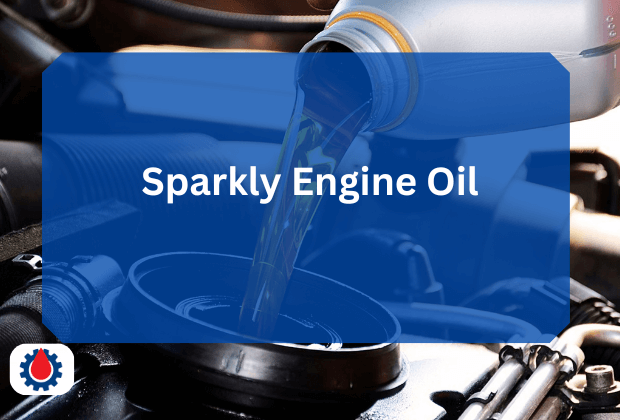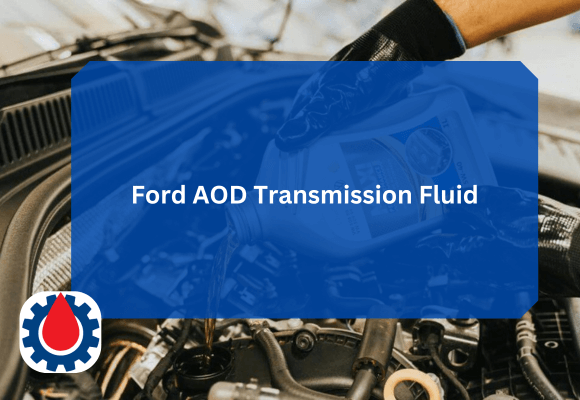If you’ve ever noticed your engine oil shimmering or containing fine sparkly particles, it’s not a cosmetic feature, it’s a red flag. Glitter in engine oil usually indicates metal shavings or particles floating in the lubricant, which typically results from internal engine damage or wear.
Sparkly Engine Oil
1. Metal Wear Particles
Engines are complex systems with moving parts like pistons, bearings, and camshafts that experience friction. Over time, normal wear can produce tiny metal shavings or particles.
These microscopic bits, often from materials like aluminum, steel, or copper, reflect light and appear as glitter in the oil. Common sources include:
- Worn bearings: Bearings in the crankshaft or camshaft can shed material, especially if the engine is old or poorly lubricated.
- Piston ring wear: Friction between piston rings and cylinder walls can generate fine metal particles.
- Camshaft or valve train wear: High-mileage engines or those running with low oil pressure may produce shavings from these components.
2. Contaminants from Manufacturing or Repairs
Sometimes, glitter in engine oil isn’t from wear but from residual materials introduced during manufacturing or maintenance. For example:
- Assembly debris: New or rebuilt engines may contain tiny metal particles from machining processes that weren’t fully cleaned out.
- Aftermarket parts: Poorly finished components or improper installation can introduce metal flecks.
- Gasket material: Certain gaskets, like those with metallic coatings, can break down and leave sparkly residues.
3. Contaminated Oil or Additives
In rare cases, the oil itself may be the source of the sparkles. Some aftermarket oil additives or low-quality oils contain metallic compounds that create a glittery effect.
While these are often marketed as performance enhancers, they can sometimes do more harm than good, clogging filters or leaving deposits.
4. Fuel or Coolant Contamination
If fuel or coolant leaks into the engine oil (due to a blown head gasket, for instance), it can alter the oil’s appearance. While not always glittery, the mix can sometimes cause a shimmering effect due to chemical reactions or emulsification.
Related White Stains Engine Splatter After Oil Change(4 Causes + Solutions)
How Serious Is It?
The severity depends on the size, quantity, and type of particles:
- Fine, sparse particles: A small amount of fine glitter in a high-mileage engine might be normal wear, especially if the oil is due for a change.
- Large or abundant particles: Chunky or excessive metal shavings indicate significant wear or damage, requiring immediate attention.
- Non-metallic sparkles: If the glitter doesn’t look metallic, it could be from additives or contamination, which may or may not be harmful.
How to Diagnose the Problem
If you spot glitter in your engine oil, follow these steps to pinpoint the cause:
- Check the Dipstick: Wipe the dipstick clean, reinsert it, and inspect the oil under good lighting. Note the color, size, and density of the particles. Metallic flecks are more concerning than a uniform shimmer.
- Inspect the Oil Filter: Cut open the old oil filter after a change (use gloves and a filter cutter). Look for metal particles trapped in the filter media. Excessive shavings suggest internal engine wear.
- Send Oil for Analysis: Professional oil analysis labs (like Blackstone Laboratories) can identify the type and concentration of particles. This costs about $30-$50 but provides detailed insights into engine health.
- Monitor Engine Performance: Listen for unusual noises (knocking, grinding), check for power loss, or watch for warning lights. These could indicate related issues.
Related Marvel Mystery Oil Engine Flush(Read This Before You Buy)
How to Fix Glitter in Engine Oil
The fix depends on the cause and severity. Here’s how to address it:
1. Immediate Oil Change
If you notice glitter, change the oil and filter immediately to remove contaminated oil. Use a high-quality oil that meets your vehicle’s specifications (check the owner’s manual). After the change, monitor the new oil for recurring particles.
2. Engine Flush (with Caution)
An engine flush can help remove residual contaminants but use it sparingly. Overuse of harsh flush chemicals can dislodge sludge and worsen damage. Follow the product instructions and consider professional advice.
3. Inspect and Repair Engine Components
If oil analysis or symptoms point to significant wear, consult a mechanic. They may need to:
- Replace worn bearings or piston rings.
- Inspect the camshaft or valve train for damage.
- Check for head gasket leaks or other issues causing contamination.
Related Can I Use Engine Restorer and Triax Oil Additive Together
4. Avoid Problematic Additives
If the sparkles are from aftermarket additives, switch to a reputable oil brand without unnecessary additives. Stick to oils certified by API (American Petroleum Institute) or ACEA (European Automobile Manufacturers Association).
5. Professional Cleaning for New Engines
For new or rebuilt engines, a professional cleaning or additional oil change after a short break-in period (e.g., 500 miles) can remove manufacturing debris.
Preventing Future Issues
To keep your engine sparkle-free and healthy:
- Regular Maintenance: Change oil and filters according to your vehicle’s schedule (typically every 5,000-7,500 miles for synthetic oil).
- Use Quality Oil: Choose oils from trusted brands like Mobil 1, Castrol, or Valvoline that meet manufacturer specs.
- Monitor Oil Levels: Low oil levels increase wear, so check levels monthly.
- Address Warning Signs: Don’t ignore unusual noises, overheating, or warning lights, as they may signal issues that lead to metal particles.
Related Used Engine Oil As Diesel Fuel(Safety, Possibility & Risk)
FAQs
What does it mean when your oil is sparkly?
When engine oil looks sparkly, it typically means it contains metal shavings or particles. These shiny flakes are usually signs of internal engine wear or damage, often from parts like bearings, pistons, or camshafts breaking down and shedding material into the oil.
What are the sparkly bits in my oil?
The sparkly bits are most likely tiny fragments of metal. Depending on their color and type, they can indicate different issues:
- Silver flakes may come from aluminum parts (like pistons or housings).
- Copper or bronze particles often come from worn engine bearings.
- Dark steel specks could be from crankshafts, cams, or valves.
Related Additive To Remove Water From Engine Oil(Top 5 Best 2025)
Why does my oil look metallic?
If your oil has a metallic sheen, it’s reflecting light off fine metal particles suspended in the oil. This usually points to accelerated engine wear, a lack of proper lubrication, or a recent rebuild that wasn’t broken in correctly.
How do you know if oil is bad?
Bad engine oil can show up in a few ways:
- Dirty or very dark in color
- Smells burnt
- Feels gritty when rubbed between fingers
- Contains visible contaminants like sparkly flakes or sludge
- Causes warning lights (like the oil pressure light) on your dashboard
What does it mean when oil starts to shimmer?
A shimmer in oil might come from oil additives, which are normal in some synthetic or high-performance oils. But if the shimmer resembles glitter or metallic flakes, it likely means metal contamination, a warning sign of engine wear.
What does it mean if your oil is bubbly?
Bubbly oil can indicate aeration, which happens when air gets trapped in the oil. This can be caused by:
- Overfilled oil level
- Leaky gaskets or seals
- Poor oil pump performance
- Using the wrong type of oil
- Bubbles in oil reduce its effectiveness and can lead to lubrication failure.
Final words
Glitter in engine oil might look intriguing, but it’s often a warning sign of wear, contamination, or poor-quality additives. By diagnosing the cause early, through visual checks, oil analysis, or professional inspection, you can prevent minor issues from becoming costly repairs.
Regular maintenance, quality oil, and prompt action are your best defenses against sparkly surprises. Keep your engine running smoothly, and let the only sparkles in your life be the ones you choose!




